What is it about teaching author’s craft in nonfiction that makes us all a bit crazy as teachers? I hear my teacher friends talking about how difficult nonfiction is for their students to both read and write. There is something about the idea of “stories” that seems easier to manage. I think it has something to do with the experiences that our students have often grown up at home and at preschool on a steady diet of fiction text.
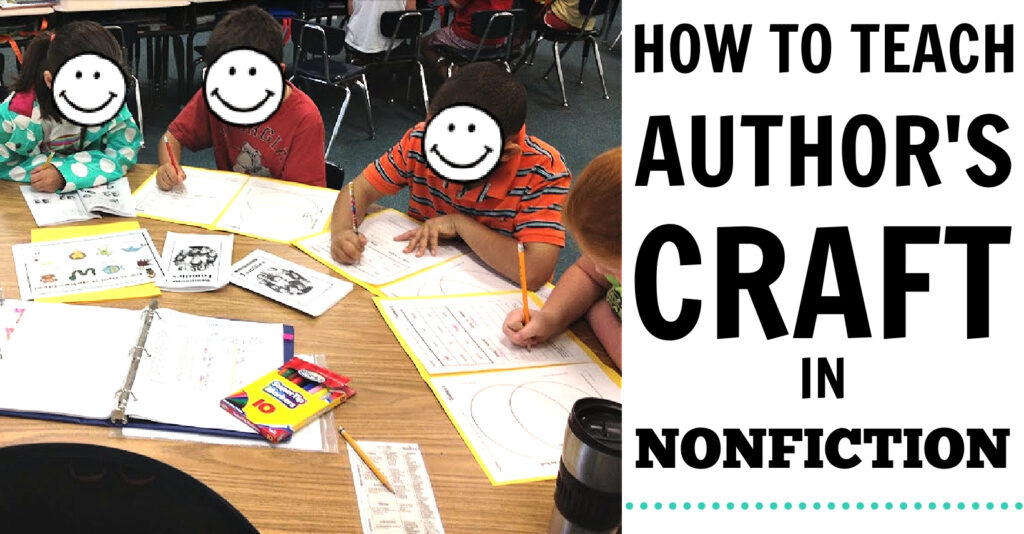
Teachers and children can often name a list of favorite books and the titles are almost always fiction. If you hear a nonfiction title, it is often from the Magic School Bus list because these books are written from that fictional perspective that hooks children into reading them. More and more, I see nonfiction books that are hard to distinguish from fiction because authors are beginning to use some elements of fiction in their writing that bridge from one to the other. Aspects of fiction writing make for interesting reading, such as:
•Starting with an interesting example – Did you know that Michael Jordan sticks his tongue when shooting the ball?
•Grabbing attention – On the moon you only weigh 20% of what you weigh on Earth.
•Emotional Language – Roller coasters scare me because I feel like I am flying out of the seat!
•Saying it simply – Bears eat berries not people.
•Surprising the reader – Leonard Da Vinci drew up a plan for a robot in 1495!
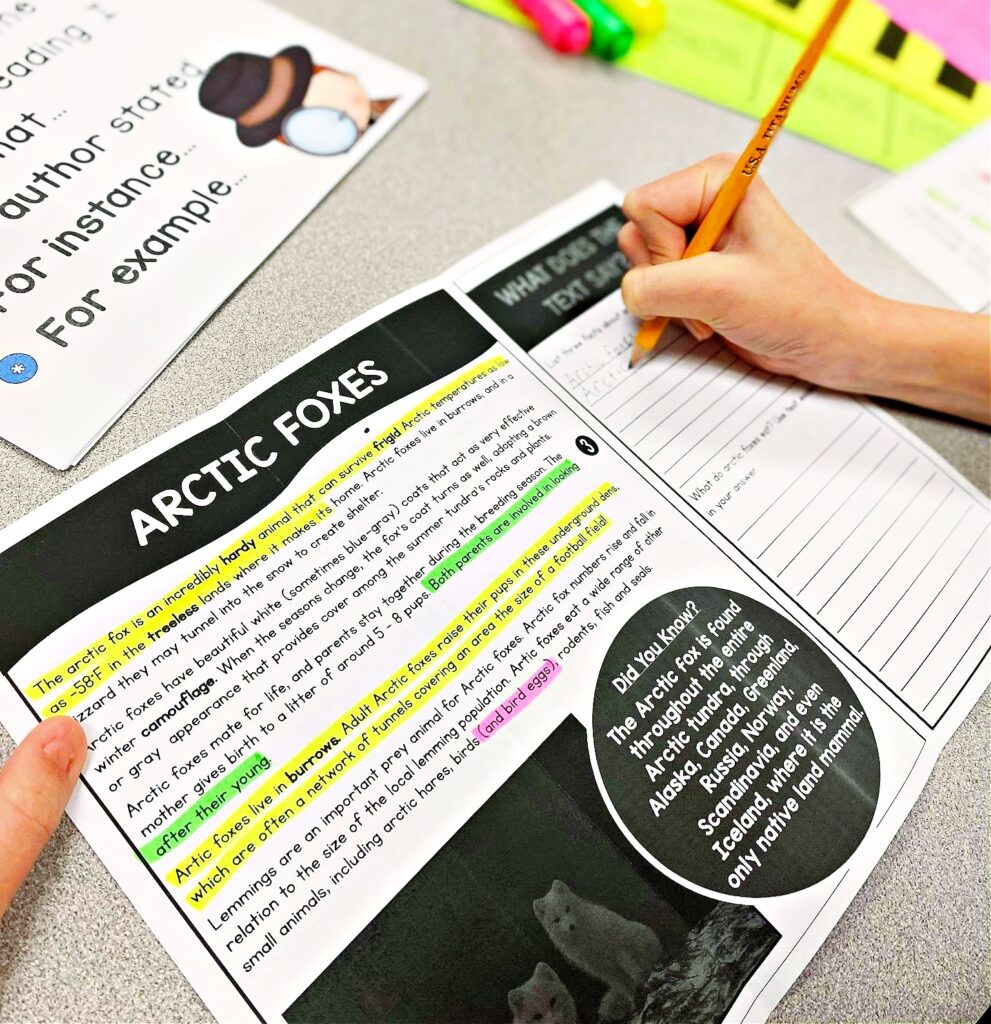
But before I can think about teaching children to use writing techniques like these, I need to think about immersing them in interesting, well written nonfiction. Some children enter my classroom thinking that nonfiction books have photos and fiction books have drawings and that is how they sort the books. If that is the starting place, then begin there and share books accordingly gradually showing the class that this is not the case. What are the topics that interest the children in my class? Do they care about dinosaurs, wild animals, animals that can be pets, the ocean, candy, favorite foods, Pokémon, Disney characters? Listening to what the children are talking about is an important way to begin to understand the “hot topics” for my grade, so this means I need to provide talking time and spend time listening and paying attention to the talk in my classroom. The children teach us so much through their conversations. I also need to build my book collection around these topics. I need to spend as much time sharing these books with my class as I do the “stories” I love as the teacher. This is a great starting point to begin teaching author’s craft in nonfiction. You can also stimulate nonfiction craft during your small groups. My science and social studies close reading packs, are perfect for that!
Once you have a collection of nonfiction text in your classroom, it seems natural to organize the books by topic. The children can find the books on their topics of interest. For teaching purposes however, I like to organize some of the books for my teaching purposes by their text structure.
Here are five basic text structures that I find myself teaching about for my primary classroom and some sample mentor texts for each:
•Problem/Solution – What is the problem and what are the ways to fix it?
o Germs Make Me Sick by Melvin Berger
o Who Eats What? by Patricia Lauber
•Cause and Effect – What happened and what was the effect (or what else happened as a result)? o Unforgettable Natural Disasters by Tamara Hollingsworth
o Nurse Soldier: The Story of Sarah Edmonds by Marissa Moss and John Hendrix
•Compare and Contrast – How are these things alike or different?
o Frogs and Toads, and Tadpoles, Too by Allan Fowler
o Snap: A Book about Alligators and Crocodiles by Melvin and Gilda Berger
•Description or List – What information is important for you to know about this topic?
o If you Lived in Colonial Times by Ann McGovern
o Penguins by Kay De Silva
•Time Order or Sequence – In what order do or did these things occur?
o Who was Walt Disney? by Whitney Stewart
o Frogs by Gail Gibbons

One last item to consider in teaching author’s craft in nonfiction, is the concept of text structures one at a time. As we explore the structure, we read and write in each structure. I also would suggest that your class decide on the brief explanation of the structure and which text examples to include.
Not all nonfiction texts follow these structures exactly, but these five will provide your students with the information needed to think about organization for nonfiction. As they read and try to write nonfiction, they will notice that sometimes there is a mix of structures in a book. These structures take the place of a storyline, and provide way of thinking about how to organize the information I am reading or how to organize what I am trying to write about. Once your students understand the text structures for nonfiction text both reading comprehension and writing of nonfiction will be easier for them to tackle!

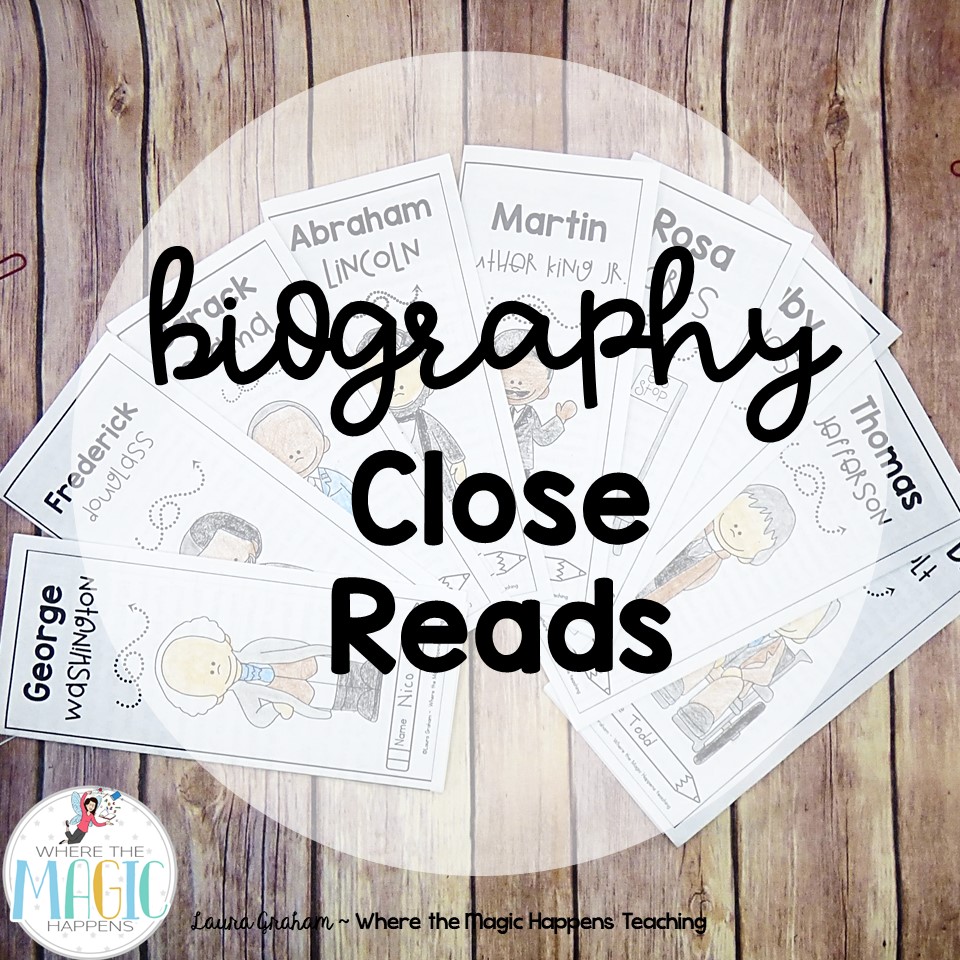
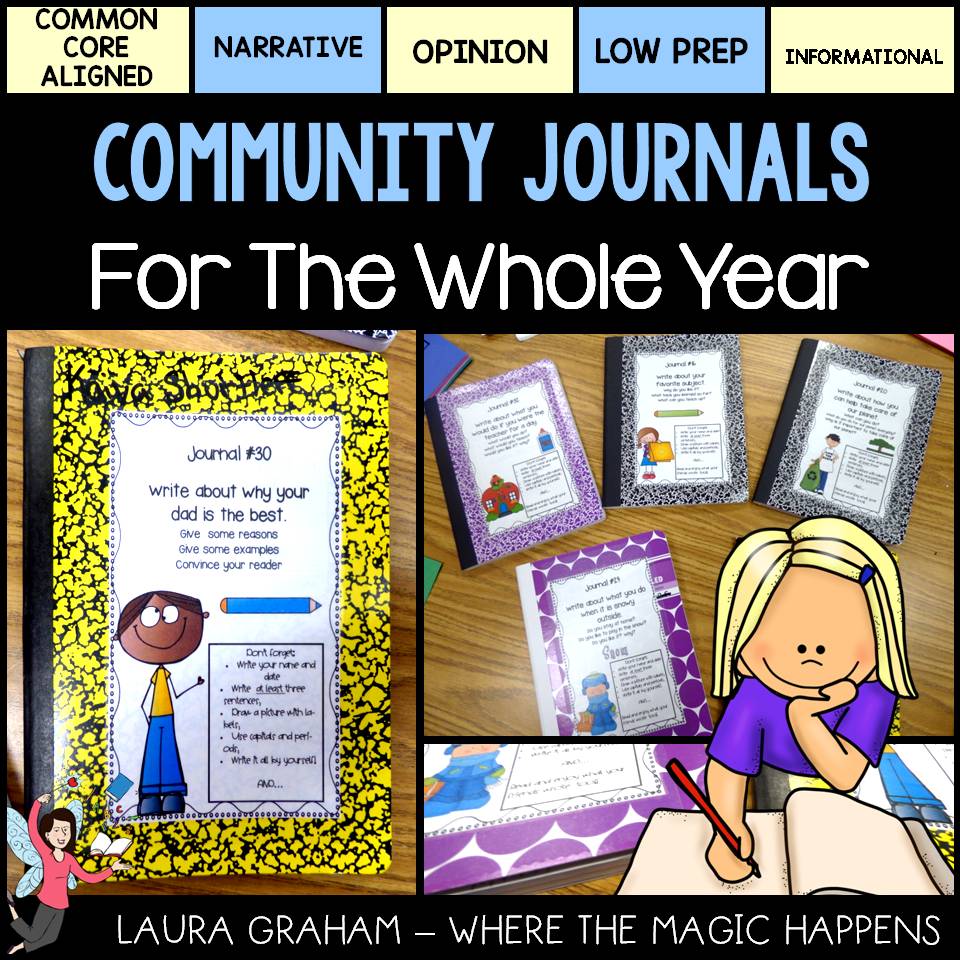
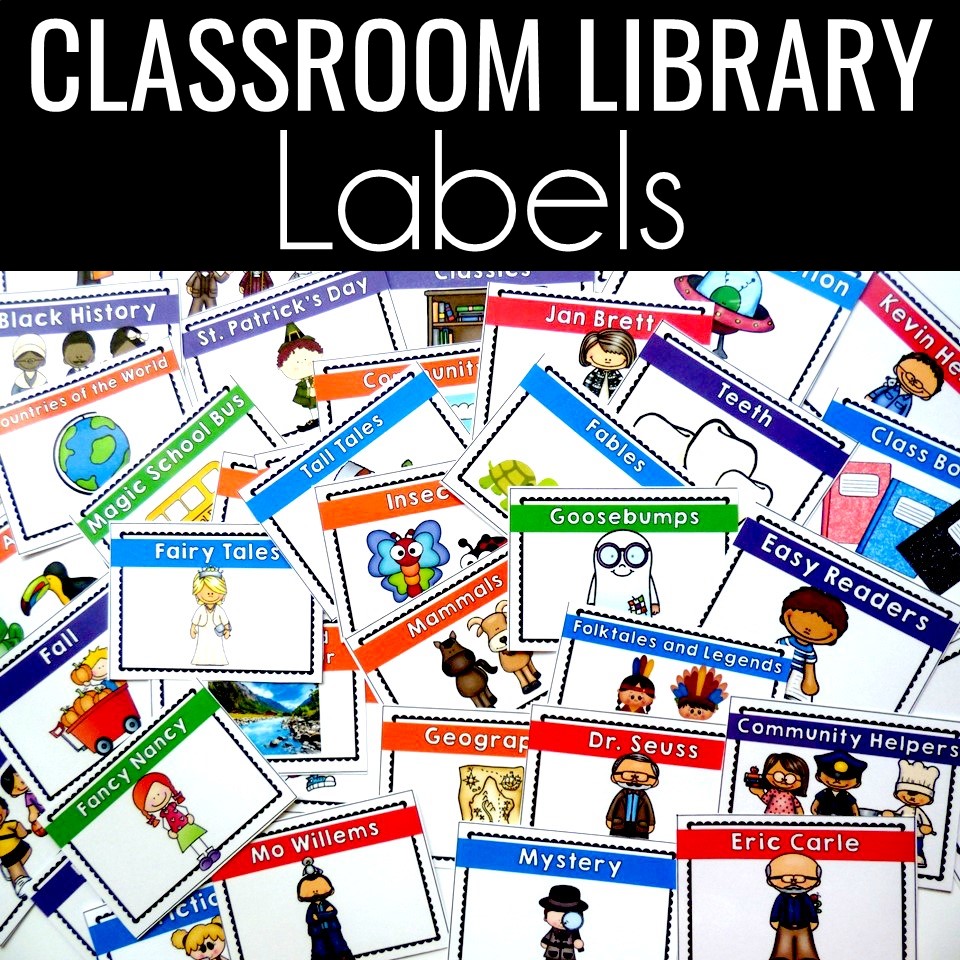

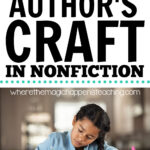
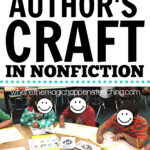
Leave a Reply